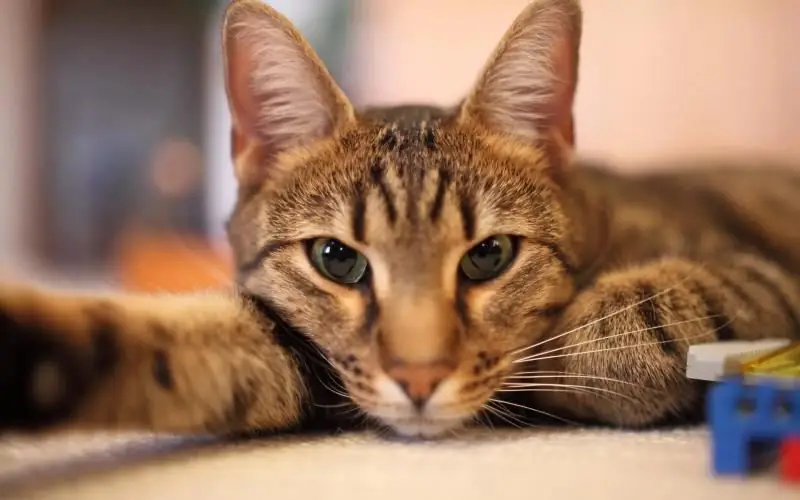
Table of contents:
- Author Bailey Albertson [email protected].
- Public 2024-01-17 22:26.
- Last modified 2025-06-01 07:32.
Red gums in a cat: what does the symptom say

Having seen reddened gums in the cat's mouth, an experienced owner will immediately determine the presence of gingivitis. A very experienced person will immediately make an appointment with the veterinarian, because he knows that gingivitis has different types, and they all require specific treatment.
Content
-
1 What does gum redness look like in a cat?
-
1.1 Gums can not only blush
1.1.1 Photo Gallery: Gum Discoloration
-
-
2 When redness of the gums is a physiological norm
2.1 Breeds prone to gingivitis
-
3 When redness of the gums is a sign of disease
3.1 For what symptoms do you urgently need to see a veterinarian?
-
4 Types of gingivitis in cats
- 4.1 Dental gingivitis
- 4.2 Juvenile gingivitis
- 4.3 Lymphocytic-plasmacytic gingivitis
-
5 Treatment of gingivitis
-
5.1 Dental care for gingivitis
5.1.1 Video: causes of unpleasant odor from the mouth of a cat
-
5.2 Drug therapy for gingivitis
- 5.2.1 Table: Overview of drugs for treatment
- 5.2.2 Photo Gallery: Medications for Treating Different Types of Gingivitis in Felines
- 5.3 The use of folk remedies
- 5.4 Carrying out procedures at home
-
-
6 Prevention of gingivitis
6.1 Video: how to brush your cat's teeth
- 7 Recommendations from veterinarians
What does reddening of the gums look like in a cat?
Normally, the gums of an adult cat have a uniform pale pink color, there are no defects on the mucous membrane covering them. The color of the gums is actually an indicator of a cat's health, as they can be easily seen by lifting the pet's lip. The red color of the gums always signals the development of gingivitis. If the redness is already spreading to the palate, tongue, inner surface of the lips, cheeks, palatine arch - we are talking about stomatitis, diffuse inflammation of the oral mucosa.
Redness of the gums can be of varying severity: from dark pink to raspberry red. It is usually localized in the projection of the roots of the teeth, forming a characteristic framing of the dental arches. In some cases, redness can affect the area of one or more teeth.
Redness of the gums is often accompanied by their edema of varying severity, while the gum begins to hang over the crown of the tooth. Its mucous membrane becomes less shiny, looser, and can easily bleed when touched. Against the background of a reddened mucous membrane, cloudy purulent discharge, filmy fibrinous overlays can be seen, in advanced cases islets of necrosis are determined.
Defects that violate its integrity can appear on the mucous membrane - erosion and ulcers of various shapes, depths and sizes, the appearance of which, as a rule, determines the cause of their occurrence.
If we assess the condition of the teeth, then the reddening of the gums in most cases is accompanied by the presence of plaque or even tartar. The latter is formed as a result of the hardening of dental plaque, the deposition of mineral salts from saliva in it and tight fixation to the tooth enamel. Plaque begins to form in the area of the tooth neck, which covers the gums.

Gingivitis is often associated with calculus and plaque
Gums can not only blush
Regular monitoring of your pet's gum condition is essential to gather information about your pet's health. In addition to redness of the gums, the owner may find other changes in their color:
- Blanching. At the same time, when pressing on the gum for more than 2 seconds, a white spot remains - it indicates a violation of blood circulation in small vessels and is a formidable symptom of shock.
-
Whiteness - can be with:
-
severe anemia resulting from:
- blood loss;
- an infectious disease, especially feline viral leukemia;
- massive helminthic invasion;
- very poor nutrition;
- intoxication, for example, when using anthelmintic drugs, the source of toxins is not a medicine, but dead parasites, therefore, in case of massive infection with worms in kittens and weakened animals, along with anthelmintic drugs, detoxification therapy (in the form of droppers) is carried out.
-
-
Cyanosis - can be with:
-
acute asphyxia:
- when foreign bodies enter the upper respiratory tract;
- swelling of the laryngeal mucosa, for example, with allergies;
- an attack of bronchial asthma;
- heart failure;
- myocardial infarction - the gums can be both bluish and pale;
- pulmonary insufficiency.
-
-
Yellowness - characteristic of jaundice, while the sclera, the inner surface of the ears and the unpigmented nose are painted yellow. Jaundice occurs when:
-
hemolytic conditions:
- infectious diseases, for example, hemobartonellosis;
- poisoning with poisons;
- pathologies of the biliary tract, for example, cholecystitis;
- liver diseases, for example, hepatitis, fatty hepatosis.
-
Such a wide palette of gum color changes is due to the fact that capillaries are close to the surface of their mucous membrane, so it is possible to evaluate both the parameters of capillary blood flow and gross changes in the composition of capillary blood. Any change in the color of the gums, especially a sharp one, is a reason for an urgent visit to the veterinarian; if the change in the color of the gums is combined with a violation of the cat's well-being, the visit should be urgent.
Photo Gallery: Gum Discoloration
-

Yellowness of the oral mucosa - With jaundice, the gums become yellow with bilirubin pigment
-

Pallor of the mucous membranes of the oral cavity with leukemia - With severe anemia accompanying viral leukemia, the gums become almost white
-

Bright red gums with gingivitis - With gingivitis, the gums take on different shades of red
When redness of the gums is a physiological norm
There is only one exception when the pet does not need veterinary assistance when the gum color changes, but the supervision of both the owner and the veterinarian is necessary. Redness of the gums caused by their irritation can normally be found only in kittens during the period of teeth change - up to 6 months. At the same time, it is moderate in nature, localized in the area of the teeth undergoing physiological replacement, and never completely covers all arcades - since the timing of the change is different for different teeth.
The edema is also mild, and there is no pronounced overhang of the gums. There are no purulent discharge, as well as filmy fibrin overlays, ulcerative defects on the surface of the mucous membrane. But despite the fact that this process is a physiological norm, experienced breeders pay maximum attention to the kitten in this period of life, since teething is a real test for the pet's immune system, as well as a crucial period for the formation of correct dentition and bite, which will further ensure effective the chewing and appearance of the pet's face, characteristic of its breed. The kitten needs to monitor the timing of teething, the absence of conflict between them, monitoring the state of the oral mucosa and its careful toilet.

When changing teeth, the redness of the gums is moderate.
Breeds prone to gingivitis
There are a number of breeds that are prone to developing gingivitis:
- British;
- Persian;
- Burmese;
- siamese;
- abyssinian;
- Bengali;
- Maine Coon.
Gingivitis in these breeds occurs due to the breed characteristics of the skull and, consequently, of the jaws, for example, in brachycephalic cats.

Maine Coons have a hereditary predisposition to gingivitis
When redness of the gums is a sign of disease
If the period of the change of teeth in the pet has passed, but there is redness of the gums, this indicates the development of gingivitis, which may have different causes.
What symptoms do you need to urgently consult a veterinarian?
The veterinarian should be consulted for any manifestations of gingivitis, since it can be both an independent pathology and indicate the development of an infectious disease or a severe metabolic disorder in a pet. The nature of gingivitis should be clarified, even if there are no other symptoms of a common disease, since different types of gingivitis require different treatment, and even therapy for one type of gingivitis often involves different regimens depending on the neglect of the process.

In all cases of redness detection, a veterinarian consultation is required
Types of gingivitis in cats
Gingivitis in cats can be:
- Primary, dental - when its cause is located directly in the oral cavity.
- Autoimmune (lymphocytic-plasmacytic) - severe damage to the oral cavity by its own immunocompetent cells.
-
Secondary - when gingivitis is a symptom of a general disease, in this case it turns into stomatitis. Along with changes in the oral mucosa, there are other symptoms characteristic of the disease:
-
for infectious diseases:
-
panleukopenia:
- diarrhea;
- fever;
- vomiting;
- cough;
- pneumonia;
- conjunctivitis;
-
calicivirus:
- cough, sneezing, runny nose;
- fever;
- dyspnea;
- joint inflammation;
-
viral immunodeficiency:
- weight loss;
- an increase in peripheral lymph nodes;
- fever;
- diarrhea;
- inflammatory skin lesions;
- peritonitis (inflammation of the peritoneum);
-
viral leukemia:
- fever;
- losing weight;
- severe anemia;
- diarrhea;
- enlargement of the spleen, peripheral lymph nodes;
- tumor lesions;
-
herpes:
- fever;
- cough, sneezing, runny nose;
- conjunctivitis;
-
-
with metabolic disorders:
-
diabetes mellitus:
- losing weight;
- increased appetite;
- thirst;
- increased urine separation;
- the smell of acetone from the mouth;
-
uremic intoxication with kidney failure:
- losing weight;
- constipation;
- swelling;
- increased urine separation;
- thirst;
-
avitaminosis - vitamin C deficiency:
- hemorrhages under the skin and mucous membranes;
- frequent inflammatory processes;
- joint pain.
-
-
A veterinarian who meets a cat with gingivitis, especially under the age of 5 years, will want to carry out tests for infectious diseases, especially for chronic viral infections of cats - viral immunodeficiency, viral leukemia. He will also be very interested in a biochemical blood test and ultrasound of internal organs. Therapy for secondary gingivitis without treating the underlying disease does not make sense.
Dental gingivitis
Dental gingivitis is most commonly caused by:
-
Accumulation of plaque in the area of the tooth neck and the space between the teeth, containing a large amount of organic substances and microorganisms, where calcium, phosphorus and hydroxyapatite salts fall out of saliva. This forms an inorganic matrix and the plaque becomes tartar. The bacteria contained in plaque and stones release toxins and enzymes - hyaluronidase, lysosomal enzymes, which causes inflammation in the gum tissue, loosening, redness and swelling. Hard dental stones additionally injure the gums mechanically. To the occurrence of plaque predispose:
- poor oral hygiene;
- use of cheap feed containing starch;
- violations in the structure of the dentition, bite;
- change in the number of teeth, both upward and downward.
- Injuries, if the cat's diet contains solid components that injure the gums. Also, frequent gum injuries are possible when gripping hard toys with the mouth.
- Feeding your cat food that is too hot or too cold.
- Hereditary factors causing juvenile gingivitis, to which some cat breeds are predisposed.

Advanced gingivitis can be complicated by gum abscess
Gingivitis symptoms:
- redness of the gums, localized in the area of the necks and roots of the teeth;
- swelling of the gums, the gum hangs over the tooth and can completely hide it with severe edema;
- the presence of bleeding from the affected areas when they come into contact with food, toys, as well as when touched during examination;
- soreness when feeling the affected areas, the cat resists examination, even if in the normal state it is calm;
- drooling, often with blood;
- unpleasant smell from the mouth;
- the cat begins to spare the jaws - chews food more slowly, tries to choose softer pieces, stops eating solid food.
With dental gingivitis, the process can develop in breadth, involving new areas of the mucous membrane, and then stomatitis will develop - a diffuse inflammation of the oral mucosa - which will multiply the existing symptoms of gingivitis. Then the discomfort in the animal, which accompanies the course of gingivitis, can be replaced by a really painful condition characteristic of stomatitis, when the cat is afraid to eat, drink, or just open his mouth because of pain.
Also, with gingivitis, the inflammatory process often spreads deeper, while, depending on the stage of the process, the following are involved:
- periodontium - connective tissue connecting the root of the tooth with the periosteum of the alveolar process, in this case periodontitis will develop, and it will become impossible to cure the tooth conservatively, inflammation destroys the periodontium and leads to tooth loss;
- alveolar processes of the jaws - with an advanced process, osteomyelitis of the alveolar processes of the upper and lower jaw and even a pathological fracture may occur.
The existence of chronic untreated gingivitis carries out constant stimulation of the immune system with bacterial antigens, which can result in an auto-aggressive immune response, as a result of which the kidneys, myocardium, and also the valve apparatus of the heart are affected. Veterinarians note a link between advanced gingivitis and the subsequent development of chronic glomerulonephritis and renal failure.

Treatment of gingivitis begins with professional oral hygiene
Juvenile gingivitis
Juvenile gingivitis develops immediately after tooth change at the age of 6-8 months. Redness and pronounced edema of the gum tissue occurs, therefore this form of stomatitis is also called hyperplastic. Bleeding of the affected tissues is characteristic, an unpleasant odor from the pet's mouth, pain syndrome is atypical. With the timely initiation of therapy, the cat "outgrows" this form of gingivitis, and by the age of 2 years the animal can have healthy teeth. On the other hand, juvenile gingivitis often occurs in conjunction with juvenile periodontitis, and in this case it is rarely possible to save teeth. This condition occurs in Maine Coon, Somali and Siamese cats.
Lymphocytic-plasmacytic gingivitis
Lymphocytic-plasmacytic gingivitis is not an independent form of the disease, it is the debut of autoimmune stomatitis, when, under the influence of any factors (allergy, infection, especially calicivirus and panleukopenia), the immune response is perverted, as a result of which over-activated lymphocytes and plasma cells are taken for targets own tissues, in particular - teeth.
The symptoms are:
- redness in the projection of the roots of all teeth on both arcades;
- the appearance of ulcerative defects on the mucous membrane;
- bleeding;
- severe pain syndrome;
- salivation;
- losing weight;
- general oppression of the cat.
Lymphocytic-plasmacytic gingivitis quickly spreads with the transition to autoimmune stomatitis, it is never limited to the defeat of the gums only.
Gingivitis treatment
Treatment of gingivitis in cats is carried out with a set of measures. Dental care with drug therapy is of paramount importance. This treatment is supported by home procedures.
Dental care for gingivitis
You can cope with gingivitis on your own only at its early stage, when the inflammatory changes in the gums are moderate and there are no tartar. Regular brushing of your teeth, as well as the use of medications, can stop the disease.
In other cases, the help of a veterinary dentist is necessary:
- ultrasonic cleaning of teeth under sedation to remove tartar deposits above and below the gum line;
- identification of irreversibly damaged teeth and their removal;
- in the lymphocytic-plasmacytic form, if drug therapy is ineffective, the premolars and molars are removed;
- opening and drainage of existing abscesses that developed as a result of complications of gingivitis - periodontitis;
- fluoridation of tooth enamel in order to strengthen it.
Video: causes of an unpleasant odor from a cat's mouth
Drug therapy for gingivitis
The following drugs are used in the treatment of gingivitis:
-
Antiseptic solutions:
- Miramistin;
- an aqueous solution of chlorhexidine;
- a pale solution of potassium permanganate.
-
Antibiotics:
- Sinulox;
- Stomorgil;
- Metranidazole;
- Lincomycin;
- Tetracycline.
-
Solutions for the treatment of ulcers - used in the presence of erosion, have antiseptic, astringent and anti-inflammatory effects:
- Lugol's solution;
- protargol solution.
- Hormonal agents - Prednisolone is used very carefully to treat lymphocytic-plasmacytic gingivitis.
-
Cytostatics - for the treatment of lymphocytic-plasmacytic gingivitis:
- Cyclosporine;
- preparations of gold.
-
Interferons - for the treatment of lymphocytic-plasmacytic gingivitis:
- Virbagen Omega;
- Intron A.
- Non-steroidal anti-inflammatory drugs: Ketofen (no more than 5 days).
-
Topical preparations:
- Metragil Denta;
- toothbrush gel;
- Holisal.
Table: overview of drugs for treatment
| A drug | Structure | Operating principle | Application | Price, rubles |
| Chlorhexidine | Chlorhexidine bigluconate aqueous solution 0.05% | Local antiseptic | Irrigation of the oral cavity 5-6 times a day | from 12 |
| Stomorgil |
|
Broad-spectrum antibacterial drug; can be used during pregnancy and lactation | Single oral administration at a dose of 75,000 U of spiromycin and 12.5 mg of metronidazole per kg of cat weight. The course is 5-10 days. | 1340 |
| Sinulox |
|
Broad-spectrum antibacterial drug, not possible during pregnancy and lactation | 8.75 mg / kg body weight once a day course for 3-5 days | 910 |
| Lincomycin | Lincomycin hydrochloride | Antibacterial drug, selectively accumulates in bone tissue, acts on gram-positive flora | 1 ml once a day, regardless of weight. The course is 3-5 days. It is forbidden during pregnancy, lactation, renal and hepatic insufficiency. | from 117 |
| Metrogyl Denta | Metronidazole | Antibacterial gel for application on the gums | Lubricate the gums 3 times a day | 195 |
|
1% solution of protargol | It is used for spot treatment of ulcerative defects on the gums | Treatment of ulcerative defects 3-4 times a day | 136 |
| Prednisolone | Prednisolone |
It is used for the autoimmune form of gingivitis exclusively as directed by a veterinarian, has a pronounced anti-inflammatory effect, suppresses the autoimmune reaction. May cause diabetes mellitus with prolonged use. Do not appoint for:
|
1 mg / kg body weight 2 times a day. They are always given at the same time, since during treatment with the drug, the pet's own adrenal glands reduce the synthesis of corticosteroids. When canceling, the dose is gradually reduced. | from 40 |
| Cyclosporine | Cyclosporine | Immunosuppressant, suppresses the autoimmune response. Do not during pregnancy and breastfeeding. It is necessary to periodically take urine tests, as it contributes to the development of a urinary tract infection. With caution in diabetes. When taking, separate from food for 2 hours (before or after). Before taking tests for chronic infections - with positive results, you cannot. | 7 mg / kg body weight once a day; when the effect is achieved, once every 48 hours; in case of remission, the reception is stopped | 2500 |
Photo gallery: medications for treating different types of gingivitis in cats
-

Prednisolone - Prednisolone is a hormonal drug with a pronounced anti-inflammatory effect
-

Lincomycin - Lincomycin, an antibiotic used to treat various diseases caused by most gram-positive bacteria
-

Chlorhexidine - Chlorhexidine - antiseptic solution for the treatment of affected areas
-

Metrogyl Denta - Metrogyl Denta is a dental gel with antimicrobial and anti-inflammatory properties
-

Sinulox suspension - Sinulox is a broad-spectrum antibiotic
The use of folk remedies
For the treatment of gingivitis, it is possible to use folk remedies in consultation with the treating veterinarian. Herbal infusions are used to irrigate the oral cavity:
-
Infusion of sage leaves:
- Pour 1 tablespoon of sage leaves with a glass of boiling water.
- Insist 20 minutes, filter.
-
Infusion of calendula:
- Pour 1 teaspoon of calendula flowers with a glass of boiling water.
- Soak for 10 minutes in a water bath, filter.
-
Decoction of oak bark:
- Grind 1 tablespoon of dry oak bark, pour a glass of boiling water.
- Cook for 20 minutes.
-
Cool and filter.

Oak bark Oak bark is astringent and anti-inflammatory
Carrying out procedures at home
The following procedures are carried out at home:
- Medicines are given as prescribed by the veterinarian.
-
Irrigation of the oral cavity with antiseptic solutions or herbal infusions is carried out 5-6 times a day, including irrigation after each meal:
- The syringe is filled with 5-10 ml of solution.
- The nozzle of the syringe (without a needle) is brought into the corner of the cat's mouth.
- Bend his head anteriorly so that he does not swallow the solution, and direct a stream of rinsing solution to the gums.
- If there are ulcerative defects, they are treated with solutions of Lugol or Protargol, using a cotton swab, 3 times a day.
- Local antiseptic gels (Metrogyl Denta, Cholisal) are applied 3 times a day.
Cat care is important:
-
Monitor the cleanliness of the oral cavity. The teeth with gingivitis are cleaned every day:
- if the bleeding of the gums is weak, you can use a soft toothbrush to brush your teeth;
- if the gums are still bleeding heavily, wipe the teeth with a soft napkin.
- The cat must eat - offer him soft appetizing food, warm it up to enhance the smell.
- The cat should have a lot of drinking water.

Brushing your teeth is essential to prevent gingivitis
Prevention of gingivitis
In the prevention of gingivitis can help:
- adherence to the vaccination schedule;
- timely detection and treatment of chronic diseases;
- preventive examinations of a veterinarian, including a dentist;
- removal of dental calculus when they appear;
-
brushing your teeth and tongue 1-2 times a week using veterinary toothpastes. These include:
- Elgidium;
- Radiance;
- Feline Oral Kea;
- feeding the cat with high-quality food, without high starch content, as well as solids that injure the gums;
- compliance with the optimal temperature of the food served to the cat - it should not be cold or hot.
You should not remove the formed tartar from the cat yourself. In animals, its formation occurs both above the gum (its visible part) and under the gum (this part is not visible). Subgingival dental calculus causes the most tangible harm - it injures the gums, forming pseudo-pockets, which often have to be excised. The bacteria contained in the subgingival calculus colonize the periodontium, destroy it, and cause periodontitis.
Only a dentist can remove a subgingival calculus. In addition, by independently removing the visible part of the stone with unsuitable tools, you can damage the tooth enamel, which will lead to the development of caries. Cats have very delicate gums, the best thing for them is ultrasonic cleaning.
Video: how to brush your cat's teeth
Veterinarian recommendations
Gingivitis always looks like reddening of the gums, which may be accompanied by their swelling, bleeding, and ulcerative defects. There can be many reasons for the disease. A group of secondary gingivitis that developed against the background of infectious diseases or metabolic disorders is a symptom of these diseases and is not subject to isolated therapy. Only a veterinarian can determine the cause of gingivitis and prescribe the correct treatment. In most cases, the treatment of the disease requires the help of a dentist.
Recommended:
Ear Mite (otodectosis) In Cats And Cats: Photos, Symptoms Of The Disease And Its Treatment At Home (including A Kitten), Reviews
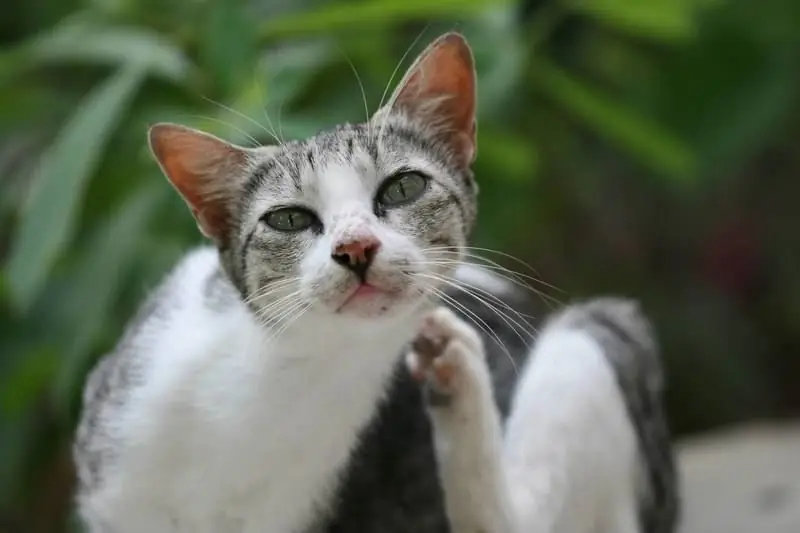
Description of the causative agent of otodectosis, how the infection occurs, the symptoms of the disease. How to diagnose and treat otodectosis. Preventive measures
Lice Beetles In Cats: Photos Of Lice And Symptoms Of Their Lesion On The Skin, Diagnosis, Treatment And Prevention At Home
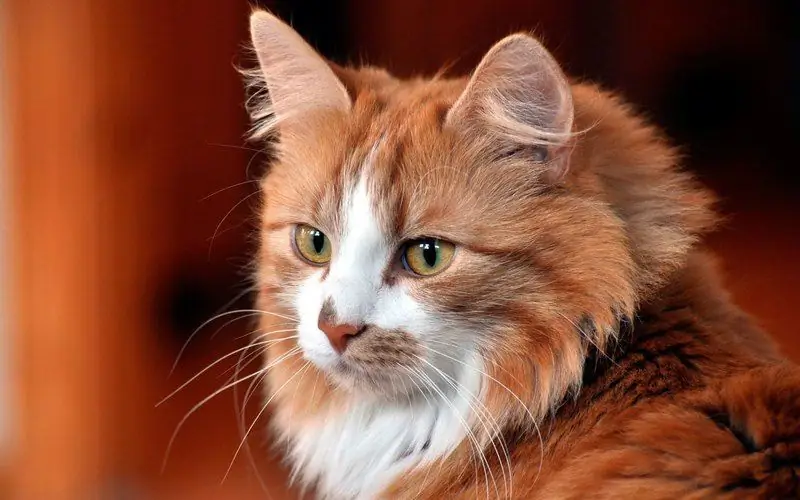
The causative agent of feline trichodectosis looks like the main symptoms. Complications of trichodectosis. How to detect and cure. Prevention of trichodectosis
Cystitis In Cats And Cats: Symptoms (blood In Urine And Others) And Treatment At Home, Medications (pills And Others), Veterinarian Advice
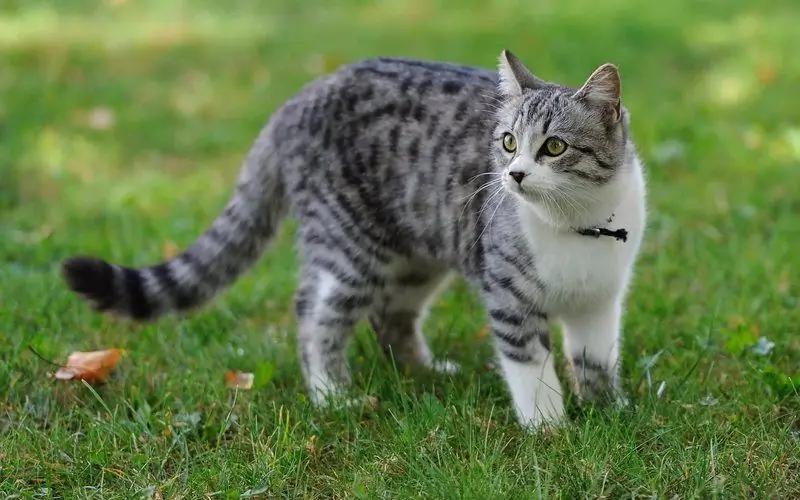
What causes cystitis, its symptoms, course forms, diagnosis, treatment. Caring for a sick cat, prevention of cystitis
Enteritis In Cats: Symptoms, Diagnosis And Treatment (including At Home), Prevention, Recommendations Of Veterinarians
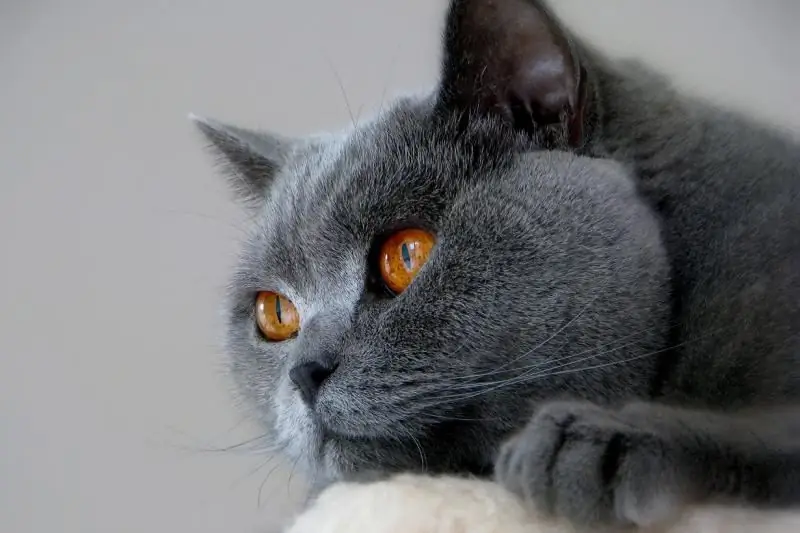
What is viral enteritis. Infection routes. Types of the disease. When to see your veterinarian. How to treat at home. Prevention. Doctor's advice
Diseases Of The Eyes In Cats: Photos Of Symptoms, Diagnosis And Treatment (including At Home), Recommendations Of Veterinarians
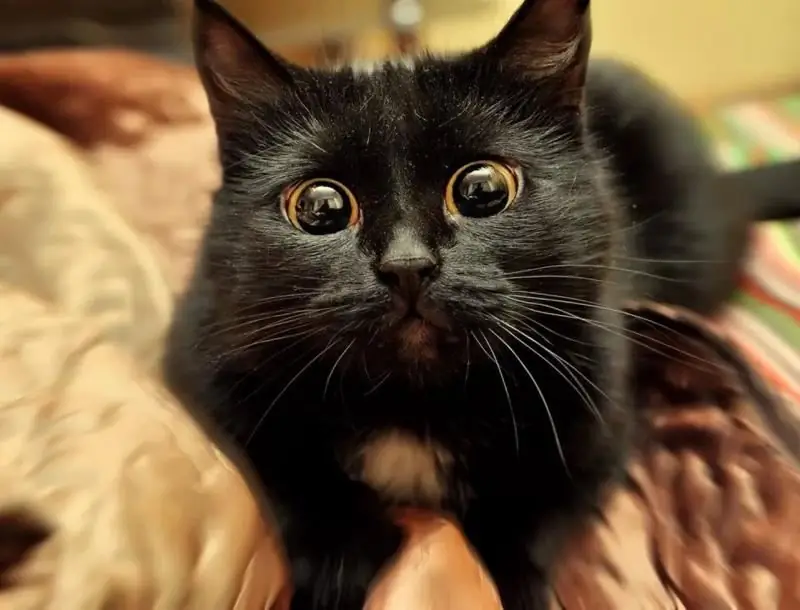
What eye diseases are found in cats? How do they manifest. Treatment rules. Animal care during therapy. Prevention. Veterinarian recommendations
